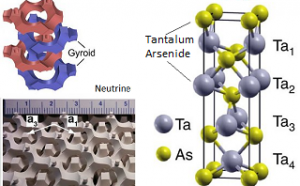
Neutrino and future of the technology
The Nobel Prize in Physics 2015 went to two scientists, the Canadian Arthur McDonald, the Observatory of Neutrinos Sudbury (Queen’s University) and the Japanese Takaaki Kajita, the Observatory SuperKamiokande (University of Tokyo) changes the physical longer as recently fixed by Higgs boson of the Standard Physics and can change the technology.
the Observatory of Neutrinos Sudbury (Queen’s University) and the Japanese Takaaki Kajita, the Observatory SuperKamiokande (University of Tokyo) changes the physical longer as recently fixed by Higgs boson of the Standard Physics and can change the technology.
Neutrinos are known to two decades, and these particles however by the standard physics theory had mass in two independent experiments, the teams led by Kajita and McDonald showed that neutrinos can change identity, or “flavor”, as jargon of particle physics.
In other words, a type of neutrino can transform into others who were already known its three types: electron, muon and tau.But for this it is necessary that the particle has mass and called Standard Model of Particle Physics considered until then that the neutrino had no mass.Robert Garisto, the Physical Review Letters editor, explains “although each neutrino is produced with a specific flavor, its quantum state can develop into a combination of three flavors, with proportions ranging in time.
The probability of detection as a neutrino muon, for example, will depend on the muon component size in neutrino at the time of detection. The smaller the difference in mass between the flavors, the greater the period of oscillation, so that the oscillations may not occur if all the flavors were the same mass or no mass were not, since the effect depends only on the mass difference squared.
The period of oscillation also increases with the neutrino energy. “The consequences are enormous because in addition to the photo and dark matter which little is known, the neutrino is one of the most abundant materials on the planet.In 1928 the British physicist Paul Dirac developed an equation that should work with a particle with mass, but in 1929 the German mathematician Hermann Weyl found another solution to the Dirac equation for a massless particle.
This point was called “points of Weyl” in the 50 Ling Lu and his colleagues have identified this point in a material called crystal double-giroide photonic and a team of Princeton researchers found fermions Weyl within a metal crystal arsenide tantalum.A nanometer scale (see photo), based on these two materials can ignite a revolution of physics of materials, photonics and especially in quantum computing.









